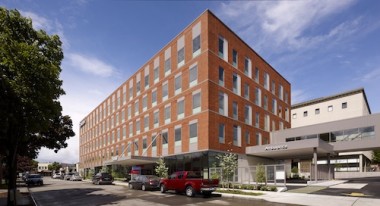Many people experience numbness that occurs at night or even persists throughout the day. There are many causes of such symptoms and if the problem is consistent and persistent, it is important to undergo an evaluation by someone trained in such conditions such as an upper extremity specialist. Usually, with a simple exam and occasionally an electrical study, the problem can be identified and often corrected.
One of the most common causes for such numbness the hand is Carpal Tunnel Syndrome. There is a wealth of information available on the subject, but not all is necessarily reputable or helpful. As carpal tunnel syndrome is one of the most frequent conditions that I see, I thought it would be worth preparing an informative article on the subject that can help my patients start the process of learning about Carpal Tunnel Syndrome here.
In short, Carpal Tunnel syndrome is a progressive compression of one of the major nerves of the hand that causes numbness in the thumb, index, middle, and half of the ring finger, along with weakness and clumsiness in hand function. The compression on the nerve starts out initially as a transient and reversible condition, but reliably progresses to permanent and irreversible nerve damage if left untreated for years.
Treatment starts with education and interventions such as splinting or injections, but if the compression persists and progresses, so far the only reliable way to relieve pressure permanently is to surgically release the Carpal Tunnel in a relatively minor day procedure that takes less than a half an hour. Patients can often work the next day if their work allows a soft dressing.
If you have Carpal Tunnel Syndrome or are simply interested in learning more, please contact me – I would consider it a privilege to help you learn more and will take the time necessary to help you understand your options. You can contact me by email here or by contacting my office at 206-633-8100.

 After 40 years of service and the addition of expert surgeons, Orthopedic Specialists of Seattle has outgrown its NW Market Street Ballard location. It has now moved to a new Ballard location at 5350 Tallman Avenue NW, Suite 500. This office is located in the same building as the Swedish Hospital/Ballard emergency room.
After 40 years of service and the addition of expert surgeons, Orthopedic Specialists of Seattle has outgrown its NW Market Street Ballard location. It has now moved to a new Ballard location at 5350 Tallman Avenue NW, Suite 500. This office is located in the same building as the Swedish Hospital/Ballard emergency room.
 Common shoulder injuries typically involve the muscles, ligaments and tendons – and rarely, fractured bones.
Common shoulder injuries typically involve the muscles, ligaments and tendons – and rarely, fractured bones.  Did you know that you – and your 9-year-old son who just took a serious tumble and likely has a broken or sprained wrist – can receive top-quality pediatric orthopedic care, quick– right in our cozy Wallingford, Ballard and Mercer Island offices? Drs. Franklin, Peterson, Ruhlman, Watt and Weil all provide orthopedic care for pediatric patients, from infants to adolescents.
Did you know that you – and your 9-year-old son who just took a serious tumble and likely has a broken or sprained wrist – can receive top-quality pediatric orthopedic care, quick– right in our cozy Wallingford, Ballard and Mercer Island offices? Drs. Franklin, Peterson, Ruhlman, Watt and Weil all provide orthopedic care for pediatric patients, from infants to adolescents.